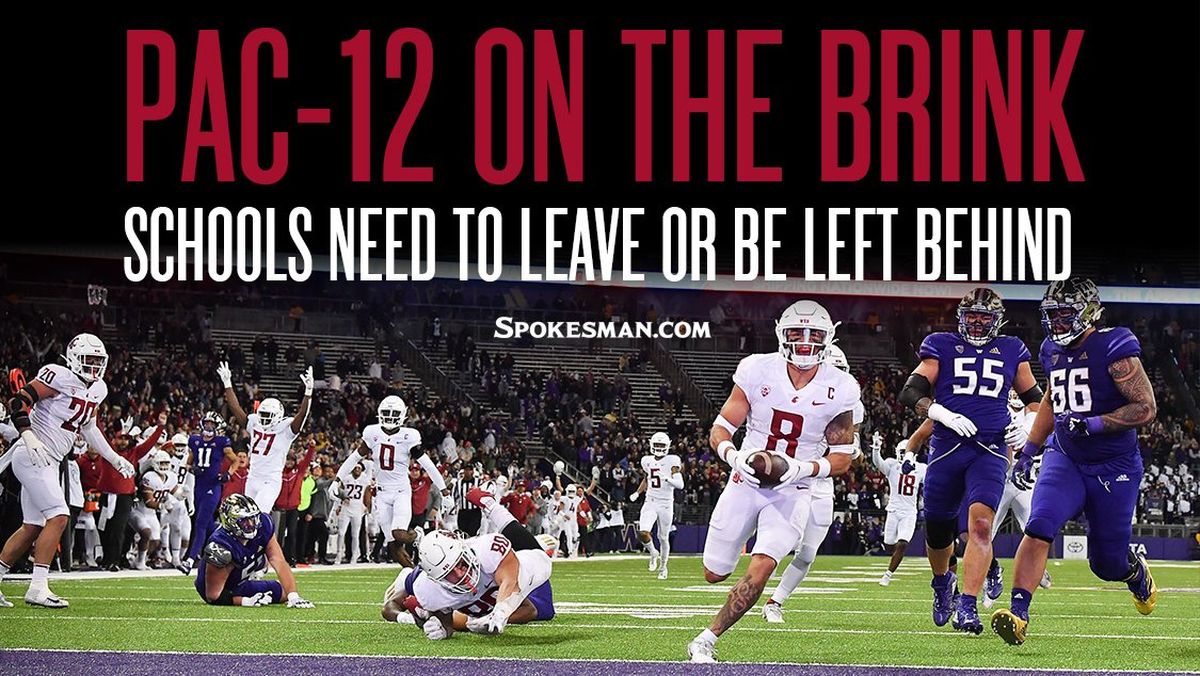Commentary: Stark decisions in USC-UCLA fallout — leave Pac-12 or be content in declining conference

SEATTLE – No one can tell you with utter confidence what Thursday’s bombshell news that USC and UCLA are fleeing the Pac-12 means for the conference.
But I can tell you this with complete and utter confidence: It will be chaotic. It will be disruptive. And it will be cataclysmic.
It’s amazing how one tweet, delivered with epic power by the San Jose Mercury News’s Jon Wilner in breaking the blockbuster report, can cause instant shock waves throughout the college sports world.
Starting close to home, the University of Washington – specifically, athletic director Jen Cohen and university president Ana Mari Cauce – is facing a stark decision, one being mirrored at Oregon, Utah, Arizona, Arizona State, Colorado and perhaps Stanford and Cal. Namely, do the Huskies do everything in their power to maneuver their way into joining the Trojans and Bruins in the exodus to the Big Ten? Or do they stay with what essentially now becomes a midmajor Pac-12 conference?
The ripple effect of this move, which leaves the SEC and Big Ten as the preeminent power brokers and everyone else flailing for survival, is profound. The Pac-12 president, George Kliavkoff, who started his tenure nearly a year ago to the day (July 1; Happy Anniversary, big guy), will have to try to coax as many remaining members as he can into staying put while simultaneously figuring out how to boost the conference with what will inevitably be some new members.
It seems nearly certain that Oregon, which has the loftiest of aspirations for its football program, will not be satisfied with a Pac-12 that doesn’t contain USC and UCLA and will see its already plummeting reputation tarnished even more. They almost have to leave now, right? And there were already reports Thursday that the Big Ten could target Utah, Colorado, Arizona and Arizona State to form a super conference.
On the other end of the spectrum, will Cal and Stanford try to leverage their presence in the vast Bay Area media market into a spot in the Big Ten or elsewhere; or will their presidents see this as an opportunity to escape the increasing insanity of college sports and leave the D-1 ranks entirely?
It’s a dog-eat-dog, survival-of-the-fittest environment that has left schools scrambling to maintain their relevance in a collegiate world already uprooted by the name, image and likeness revolution and transfer portal upheaval. As one Twitter wag noted on Thursday, this is a case of entire programs entering the transfer portal – and not for the first time in this new Wild, Wild West era of collegiate sports.
When Oklahoma and Texas were revealed to be leaving the Big 12 for the SEC last year, threatening to form a super conference that would swallow up college football, the Pac-12, Big Ten and ACC responded by forming an alliance. It was predicated on the premise there was strength in numbers and they at least wouldn’t betray each other.
“Hopefully, this will bring some much-needed stability in college athletics,” Big Ten President Kevin Warren said when the Alliance was announced, a quote that looks positively Machiavellian in retrospect.
Significantly, there was no contract signed to codify that poaching wouldn’t take place. Kliavkoff called it a “gentlemen’s agreement,” while ACC president Jim Phillips rhapsodized, “It’s about trust. It’s about we’ve looked each other in the eye, we’ve made an agreement, we have great confidence and faith.”
So much for trust. The Big Ten has apparently decided to prioritize self-aggrandizement over trust. And now there are 10 schools in the Pac-12 trying desperately to figure out how to proceed. I started my sports writing career a lifetime ago covering the Pac-8. I never imagined it would head back in that direction.
The Huskies will have to join the exodus or be satisfied where they are, in a conference whose already declining spot in the sports hierarchy will drop even further. The implications for recruiting are profound. The Huskies just completed an amazing recruiting run last week with nine new commitments in eight days that give new coach Kalen DeBoer a top-20 ranking for 2023. But that momentum-building surge could be nullified with this development. Do kids want to go to a place where the chance to compete for a national title has just been neutered?
Oregon and Washington would seem to be the two most logical candidates to join the migration, though Utah and others could try to work their way into it the picture. And where does that leave Washington State and Oregon State, which may not have quite the athletic heft to be a prime target of poaching.
In this new world order, traditional rivalries are dying. It’s all about viability, relevance and recruiting. More to the point, it’s all about money.
Does Washington, which still maintains a perspective that its primary goal is education, have the stomach (and the cunning) to join these machinations, full steam ahead? And if it joins the big boys, is it comfortable leaving behind Washington State and other geographic ties that have meant to so much to the lore of their program?
It’s all pretty heady stuff, and we’re just at the early stages of trying to figure it all out.
I’d almost guarantee there are twists, turns and unexpected detours ahead.
Welcome to the chaos.